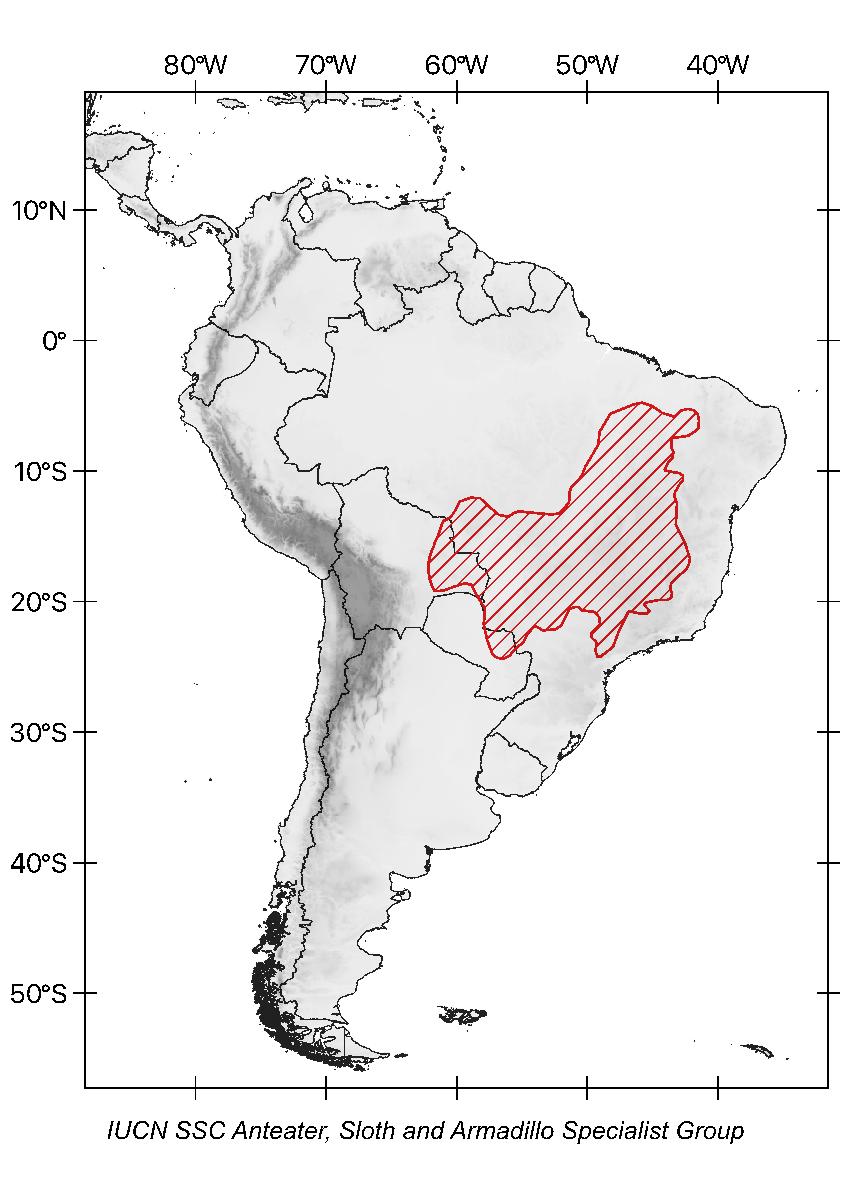Cerrado naked-tailed armadillo
(Cabassous squamicaudis)
other common names
–
Taxonomy
Order: Cingulata
Family: Chlamyphoridae
Subfamily: Tolypeutinae


description

range
This species can be found in eastern Peru, northern and eastern Bolivia, eastern Paraguay, and in Brazil south of the Amazon river. Its presence in northeastern Brazil is doubtful and needs to be confirmed.

reproduction

diet
The Cerrado naked-tailed armadillo is an insectivore that mainly feeds on ants and termites.

HaBITAT and ECOLOGy
Cabassous squamicaudis inhabits tropical shrublands and grasslands such as the Cerrado, the Chiquitano Dry Forest, and the gallery forests of the Brazilian Cerrado in São Paulo, Brazil. It also occurs in wetlands such as the Pantanal. The species has been recorded in croplands and pasture, but its survival rate in human-modified areas is unknown.
This solitary, primarily fossorial armadillo has been found to spend 99% of its time underground in the Brazilian Pantanal, where it exits its burrows during the hottest hours of the day. Densities have been estimated at 2.1–27 individuals per km². Average home range in the Pantanal was estimated at 2.06 km2 for males and 0.59 km2 for females.

curious facts
This species was previously thought to be a subspecies of C. unicinctus, although the latter looks rather different due to its grey carapace with a pinkish border.

threats
The major threat to this species is probably habitat loss. Hunting seems to have a limited impact on this species, probably due to its fossorial habits and rare encounters.

Population trend
Unknown.

conservation status
Cabassous squamicaudis is listed as Least Concern in view of its wide distribution, presumed large population, its occurrence in a number of protected areas, and because it is unlikely to be declining fast enough to qualify for listing in a threatened category.